Visualize, for a moment, a tabletop RPG system that can satisfy the most diehard of crunch loving, I-need-build-depth players while also appeasing the opposite camp, loving light use of dice and narrative sessions that prevail over two-hour, grid-based combats. Well that system is here! You don’t usually find these two things in the same place, as rules crunch in one part of a game tends to lend itself to a certain heaviness across all aspects of that game. Here we have something truly special. I try my best to scout out games and content for our site that I think are unique in some way, novel and deserving of your time, attention, and maybe even your money. So what if I told you that I’d demoed the Altered Carbon RPG last year at one of Renegade’s virtual conventions and have been foaming at the mouth to tell you about it ever since?
If you’ve loved any of my prior content about Renegade’s excellent TTRPGs, such as my review of Overlight, its supplements, tips on running it better, or my thoughts on the highly acclaimed Kids on Bikes, you’re in for a real treat here. I think Renegade has hit a real sweet spot with their Altered Carbon RPG (co-published with the also excellent Hunters Entertainment). As with my prior RPG reviews, you can expect this one to run a bit long, so please feel free to skip to the header sections that interest you most. Or just buckle up for the ride! We’ve got a lot to dive into!
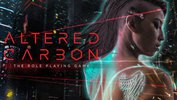 Altered Carbon
Altered Carbon
Publisher: Renegade Games, Hunters Entertainment
Format: TTRPG
Price: $50.00
Copy Provided By Publisher
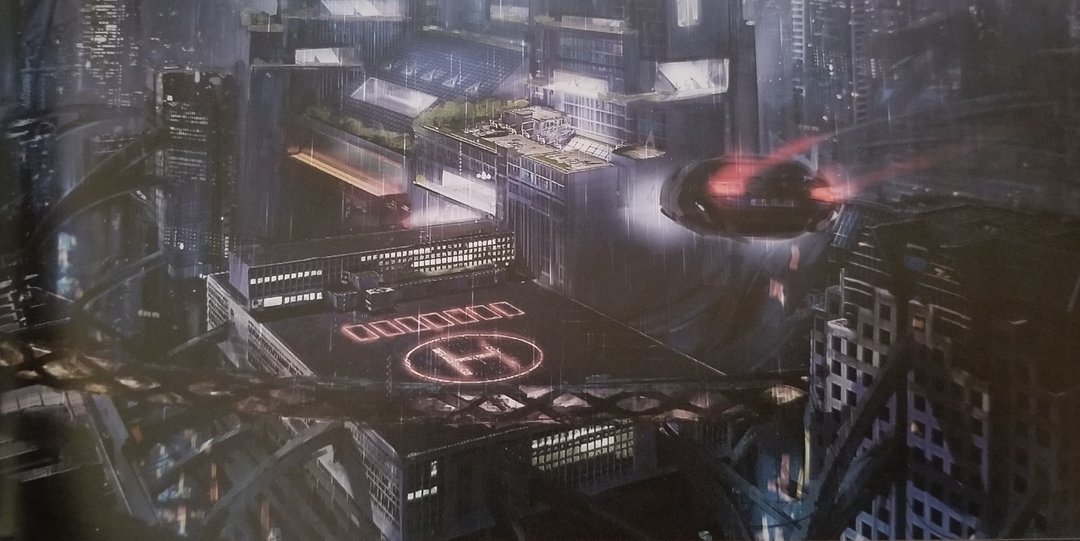
Welcome to Altered Carbon, worlds filled with neon, grit, beauty, and flying cars!
The Lore, Getting Into The Worlds Of Altered Carbon
If you’re unfamiliar with the setting of Altered Carbon, I’ll toss you the quick rundown. While the lore has many of the staples of a cyberpunk dystopia, flying cars, neon, buildings that stretch into the sky, what makes this setting unique is the invention of the DHF. Digital Human Freight, a round palm-sized silver and blue disk slotted into the back of a person’s neck, capable of storing their consciousness, was designed to allow human explorers a means of surviving long trips across space. “The Stack” as it’s colloquially referred to. You put yourself on ice for a long trip and “spin up” again in a body when you reach your destination (usually to establish a colony). Once your new home builds a needlecasting facility, your stack information can then be transmitted across the galaxy to other receiving stations, putting you into a body referred to as a “sleeve” and allowing nearly instant travel across vast distances.
As great sci-fi goes, this propels characters into all sorts of explorations of self. Besides the obvious benefits of being able to find sleeves that suit the identities wearing them, it really opens up discussion on what the mind is capable of when it exists so separately from the body. The answer means all kinds of different things to different people, but one thing that remains constant is that the tech soon evolves into a means by which all humans live longer than their biology allows. All people are now given stacks when they’re old enough to be imprinted on one. Of course, with this setting being the dystopia it is, those with the money to maintain clone sleeves of their birth bodies obtain virtual immortality, bypassing the eventual erosion of self that happens as the mind is forced to link to new body after new body over generations (a phenomenon that’s particularly hard on a mind that is forced into a sleeve it doesn’t see as matching who it is). Those with power and money reinforce their positions at the top of society while those living in squalor often get what they can and look out for themselves and others close to them. At least, that’s how it is on Earth. The book will clue you in that not all worlds operate with the same power structures, though you can rest assured that power struggles are universal.
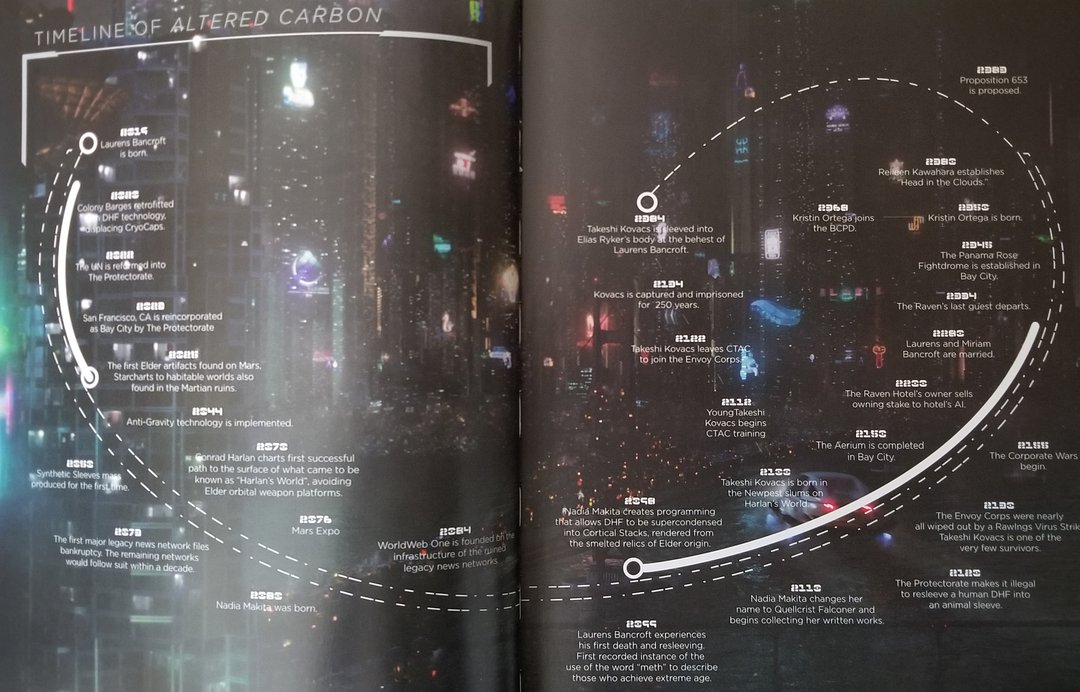
A timeline included in the book helps tie in events of the first two seasons of the Netflix series with where you choose to set your game.
If you’ve at least seen a few episodes of the show on Netflix, then the setting will be immediately familiar. Lore-wise the RPG is a solid bullseye. If you’ve seen it in the show, it can be built in the game. That cool pistol in season 1 shooting flechettes that can be recalled into the gun’s magazine? It’s super pricey, but you could potentially get your hands on one. Season 2’s mag plating that lets you draw your pistols straight to your hands from across a room? You’ll need linked weapons, but yeah it’s here. All manner of blades, concealable, monomolecular, or thrown? Pick your poison. Bionic upgrades to your sleeve for all kinds of cybernetic or biological enhancements? Those exist too. As do augments that allow you to take a sleeve beyond the human norm, encompassing animal traits and features if that’s something of interest to your character. Want to play an AI like Poe? There are extra rules for that in game. There are even rules for Meth characters and Envoys, the “immortal” rich folks and super soldier/spies of the show, though these are by GM permission or a special campaign setting as one would expect.
In the demo game I ran for review with some friends, both folks who had seen the show and those who had not were immediately drawn in by the setting. This world is rich and vibrant in its filthy neon, cloud-level glitz, and bloody shootouts. It can take the form of an action-packed adventure or a cyber noir investigation of deepening rabbit holes. In our game a double sleeved client, something that’s very illegal (loading a stack backup into a second body while the first one’s still alive), lead to a man in a bidding war against himself. Could either of him be trusted? Could the group even be assured they were talking to an actual duplicate of their client in a world where anyone’s stack could be inside a clone body? The lore of this system lets you dig in deep, and the core book gives you plenty to go on. Go ahead. Go wild and have fun! We definitely did.
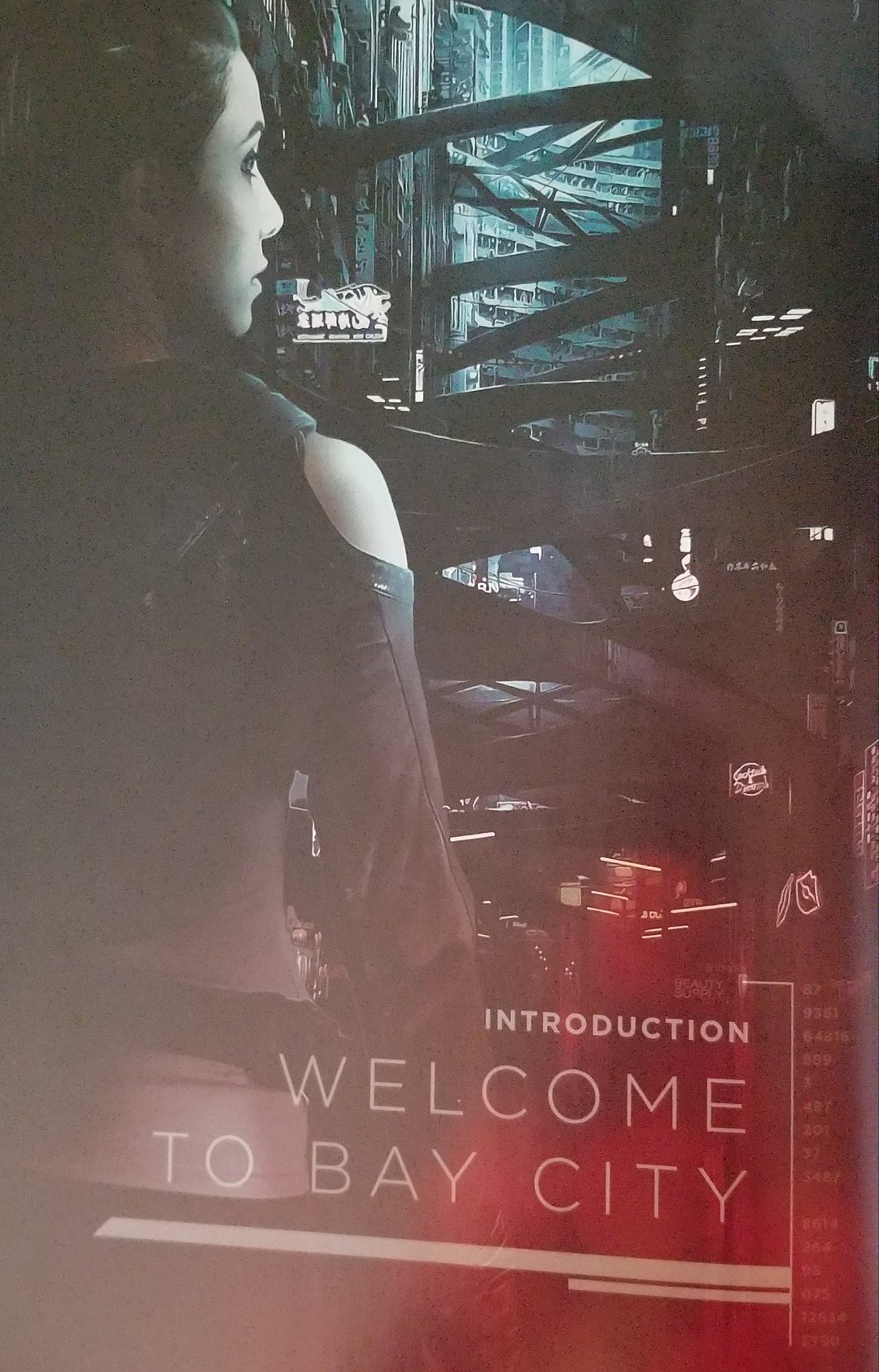
Welcome to Bay City. It may not be much for a Grounder to look at, but plenty call it home.
The Builds, All The Depth You Could Ever Want
One of the biggest draws from my own demo of this game system was in seeing a perfect marriage of two seemingly conflicting styles. Altered Carbon is both a heavy, in-depth system with lots of rules and nuance to toss around while at the same time somehow trimming back the excess during play and remaining streamlined, smooth, and quick when the dice start rolling. The result is that, while gameplay itself sees narrative front and center and dice that almost melt into the background, the system still has so much satisfying substance to sink your teeth into that build lovers who want to customize every little aspect of their characters will feel right at home as well. It’s this depth, in character builds, that we’ll focus on next.
I’ll say this first. If you’re not attracted to deep builds that you can sink an hour or two into while exploring, there are easy character generation rules using archetypes that allow you to throw a quick character together and go. There’s also an intermediate step you can add to tweak archetypes to your liking without having to fiddle too much. And, of course, for the lovers of everything manual there are rules for doing everything yourself, including building your own archetypes if you find the base templates don’t suit you. For the purposes of the demo I ran for review, I used the intermediate method and found it fantastic. I was able to cobble together three characters with relative ease and then spend an entire night making small adjustments until I got them just right. Again, I spent a ton of time playing with builds for review purposes, but you don’t necessarily have to. There will be pregenerated resources online as well, though for this review I did everything myself; not that I minded, because it taught me just how deep the character build rabbit hole goes!
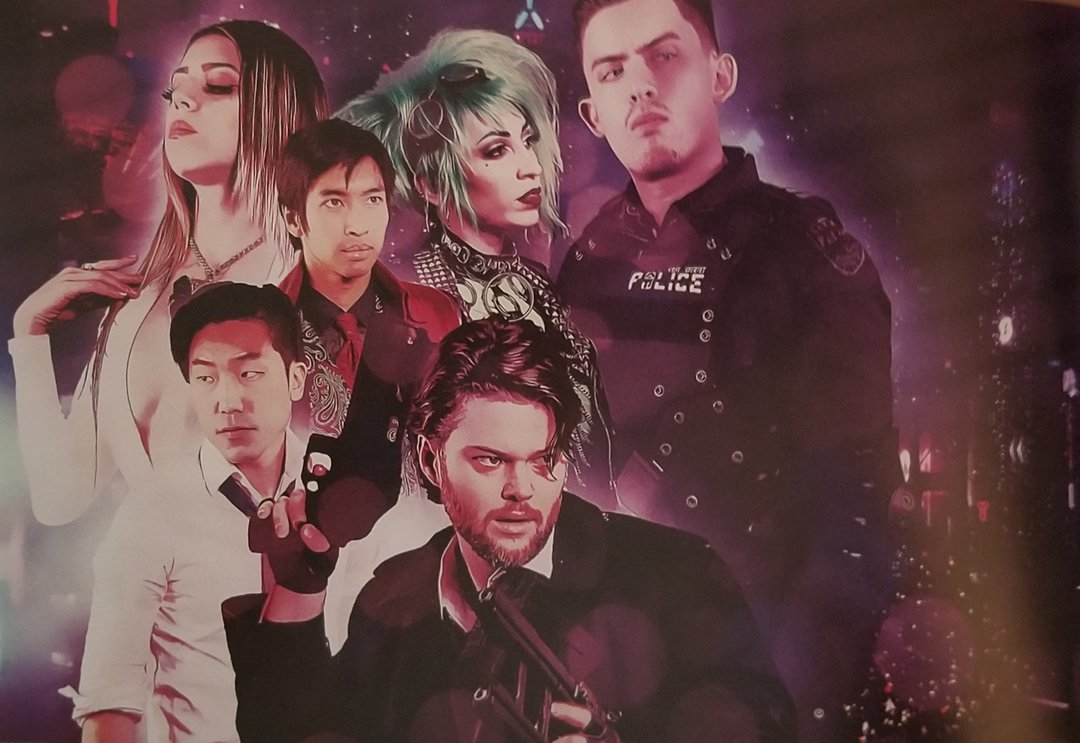
This system gives you all the tools to build any character you can think up! From the gritty noir ex-cop to the rich kid who slings around money and influence instead of guns.
There are so many options to making your character perfect. You can choose the age of your character’s DHF, with older characters gaining more points to build with! The catch? The older your character is the lower ego score they start with, the health points of your mind itself, and your character comes with more baggage. Literally. You’ve lived a while, and you have a past that may come back to bite you at the wrong time. How about your sleeve? Is it your birth sleeve? Synthetic? Low grade? High quality? Does it have augments? It’s a deadly system that can kill characters and NPCs alike in a blink, but your character lives as long as your stack lives. Still, you might become attached to a favorite sleeve you’ve heavily modded. How much do you choose to invest in it, lest you find yourself looking for a replacement?
There are trait trees you can buy up, too. After you’ve bought your stats and skills (things we’ll discuss more in the next section), you can purchase various little perks that give you small added bonuses to skills, wealth, contacts, and more. These help you specialize your character even further as that hacker or socialite you really want. Or maybe you mix and match, a gangster who originally came from outside the Bay City area and actually knows how to fend for themselves in the wild. And do you purchase any specializations? You spend substantial points to learn these, representing formalized training in skills that will remove various penalties the less disciplined will still shoulder, say when firing most weapons. A little bit of training can go a long way! I’m keeping the explanation here simplified, but rest assured there’s a veritable buffet of options on hand to choose from. The combinations you can make are truly staggering in number.
Finally, there’s your equipment. What weapons do you pack? Blade, bludgeon, or powered melee are all available, as are every flavor of pistol, rifle, and automatic weapon you can imagine. There are railguns, energy weapons, and exotic weapons like the aforementioned flechette pistol. You can get truly creative here if you’re feeling inspired. In our demo game, my hacker had a cybernetic holdout chamber in her right forearm, a secret compartment holding a derringer with plasma shells. A nasty surprise for any foe thinking the physically weaker techie would be easy prey up close! This being the RPG that it is, there are also tons of extras: specialized equipment, hacking decks, custom software and viruses, aircars, armored clothing, and just about anything else you can think up. Finally, wealth in Altered Carbon is represented abstractly by credit “sets” of level 1 through 5, so purchasing gear is simply a matter of your character having enough wealth on hand to exchange for the needed extras. And you get all of this in the core book. That’s a ton of customization options for a single purchase! Whether you slap together something quick or take an evening adjusting every little detail, there truly is something for everyone in the character building of this system.
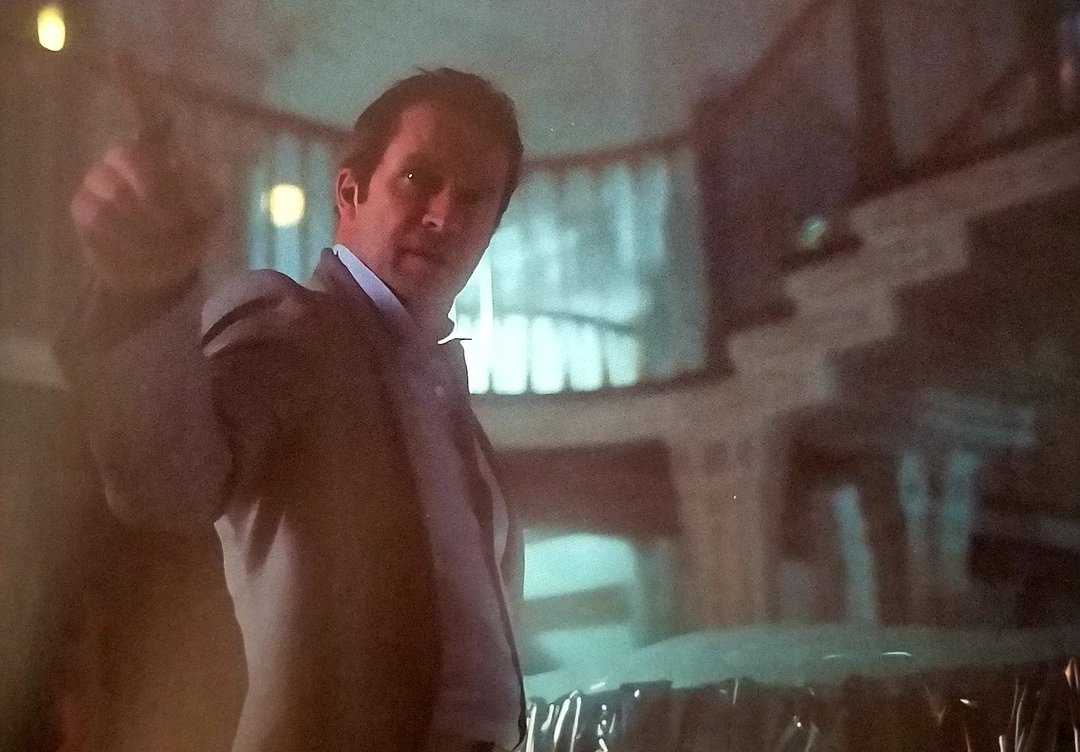
Meths, a shortened slang for Methuselah from the Old Testament, are the richest of society and virtual immortals. Tangle with them at your own peril and regard their offers with much suspicion.
The Dice, Beauty In Streamlined Simplicity
For all the complexity on offer in character building, I cannot overstate how streamlined actual play is. This will probably be the longest of the sections in this review as we need to cover die rolls and skills, as well as movement, damage, and some truly novel inclusions like the initiative system. All of which keep the game moving at an exciting pace and help your sessions play out like you’re watching an episode of the show rather than just another tactical minis-on-a-map game, combat rounds stretching into the infinity of half a night’s play.
So let’s talk dice! Skills are simple and straightforward, and you’ll soon find the basic system of rolls pairs perfectly with the complex characters behind them. Skill training is represented by dice of d4 through d12, one type of die being assigned to each skill. Lower numbers are better on rolls, so d12s will represent “untrained” or amateur level talent while a d6, able to give you lower numbers more reliably, represents something your character is highly practiced in. Characters don’t start with a d4 in any skills by default, but of course you can buy your way into them. There’s a catch though! Critical success and failure are determined by rolling a 1 or the highest number on a die respectively. Which means while a d4 is the most likely to have you succeed at a given task, it’s also got the highest variance for story flair, spectacularly succeeding or failing at any given moment. Whether that kind of power is something you want, or whether you feel better keeping your best skills at the d6 level, is up to you. Regardless, I have to say that this very streamlined base does a fantastic job of distilling a character build’s crunch into something that’s quick and easy to resolve in the heat of gameplay.
There are even more ways to spice up this formula, though! GMs can give out the normal bonuses and penalties you’d expect in any TTRPG, making difficulty checks easier or harder based on training, help, equipment, or the situation at hand, but they can also impose “luck dice.” Don’t let the name throw you! Luck dice are usually bad, representing a character pushing their luck on an especially difficult task, rolling an additional die and adding its value to the skill check (remember, low numbers are better and higher results are bad). There are all kinds of additional rules around these luck dice, for example allowing players to spend valuable, leftover build points (essentially their XP) to bend luck dice to their favor, succeeding by luck where they might otherwise fail. And if both the skill die and luck die should roll simultaneous crits or critical fails, a Stroke of Luck or Catastrophe happens, cementing an epic moment in the narrative. We had one such Stroke of Luck ourselves in the review session, with our hacker forcing their way into the antagonist’s personal PC, and I’ll just leave to your imagination what kind of damage they got to do by installing the perfect, stealth backdoor into that system.
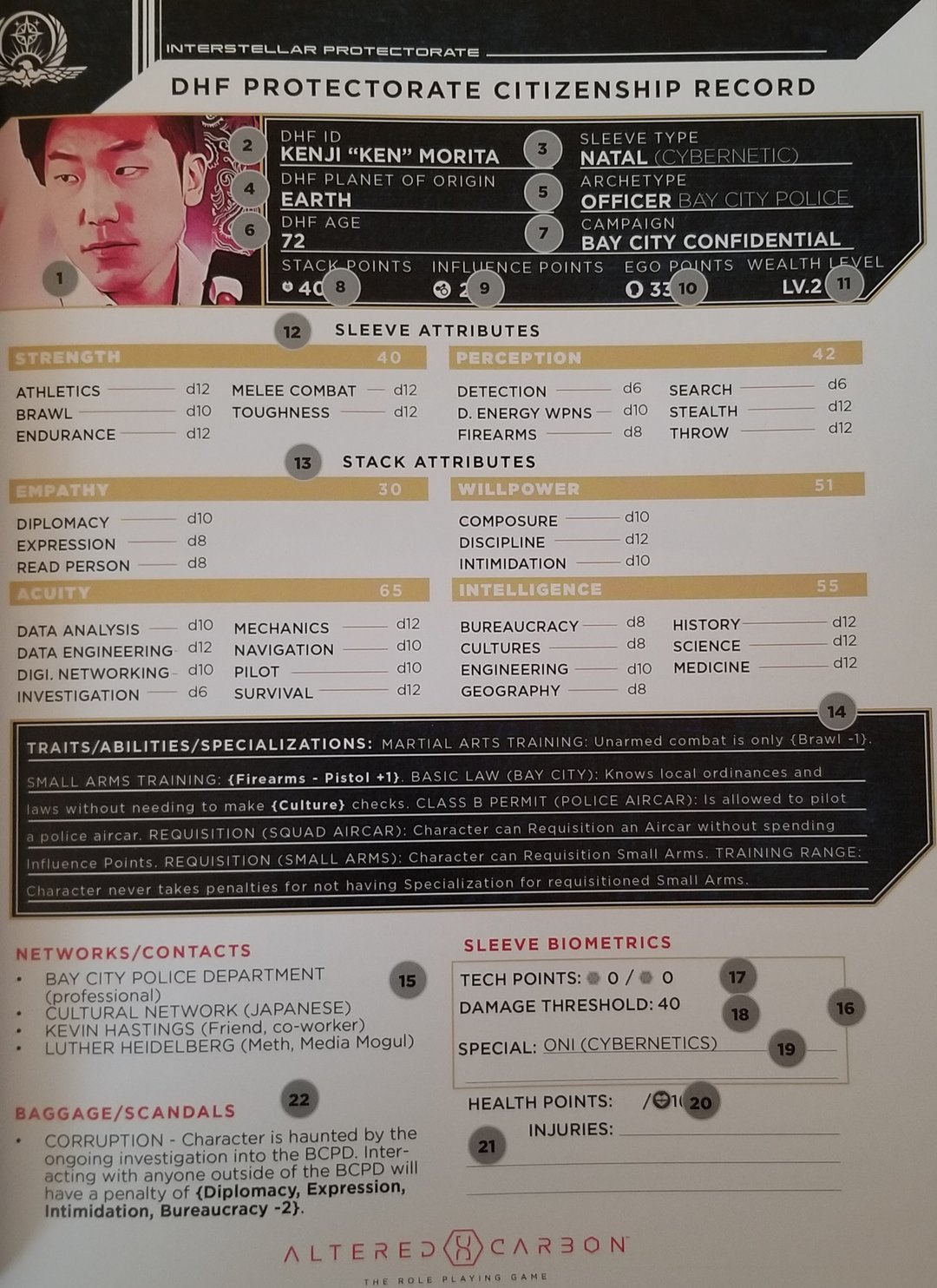
A sample character sheet from the book.
Still the rabbit hole goes deeper! Setting difficulty checks to roll at or under, target result (TR) as they’re called in this system, is just one of two ways a character can test their skills. In many cases where the success of a task is dependent not on outside factors but on the practitioner’s own expertise, they roll against their own stat bonuses! A character’s strength bonus, for example, determines the base TR for rolls to hit with Brawl in a fistfight. The GM can still hand out bonuses or penalties, and various equipment, specializations, and weapon firing modes can give further bonuses to some of these rolls, but this presents a very interesting way to link a character’s build to single, quick rolls. When two characters square off in combat, for example, hits and damage are settled as quickly as a die roll from each side: one from the attacker with their weapon of choice and one from the defender with a dodge or other opposing roll. The roll with the higher degree of success takes the contest (that is, they succeed their roll by more than the opponent, or fail by less in the case of double failed rolls). Failures by one side can be “spent” as extra degrees of success by the winner, and the winner then inflicts damage based on how well they succeed! Some extra special attacks may require succeeding by certain margins as well.
In our game, our Yakuza muscle was the main damage powerhouse, leveraging his strength and skill with his monomolecular blade to often carve up enemies in a single combat round. Our private investigator, on the other hand, often relied on “saturation fire” with her pistol, a firing mode costing extra ammo or combat actions to add hit and damage bonuses, dropping enemies quickly too. They were both effective in combat, but while one’s skills were honed to allow for efficient and deadly strikes, the other achieved success by clever use of range, cover, and squeezing the trigger an awful lot! My players related to me after our test game that they found this system quite unique and enjoyable, and that they found each character full of theme and flavor coming directly out of their gameplay.
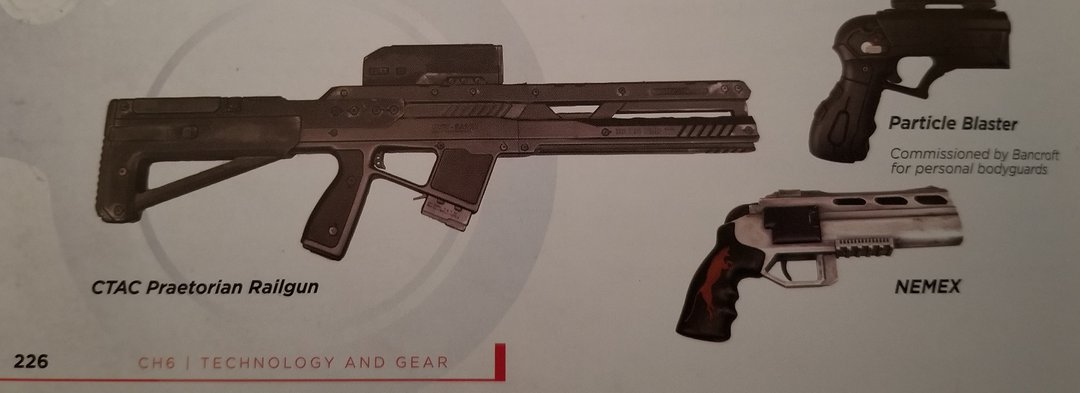
Speaking of squeezing triggers, you certainly get your pick when it comes to options!
Characters in Altered Carbon are made to feel like they have a lot of agency in the world and how they apply their strengths, all while keeping die rolls (even in combat) as quick as a few seconds to calculate and resolve. This keeps the engagement high and the pace of the game fresh whether the group is infiltrating a corporate tower or getting into a shootout in the lobby! Another mechanic that keeps the game from bogging down is the movement system, related to the initiative dice and deserving of mention. Rather than breaking maps into grids and counting squares, maps are divided into zones. Anything standing inside a room might be considered the “shared zone,” while anything past the door frame and in the lobby outside would be an “adjacent zone.” Any zone beyond an adjacent one, say outside the front door, is considered a “distant zone.” This gives players less to consider when calculating a charge at an enemy or a dash for cover, as most move-based actions in a shared zone are either free or cost a single action die (more on that momentarily). Players are freed for spending that mental energy on what counts: getting to the action!
Perhaps the single most clever use of dice, and the most novel concept I’ve seen in this system, goes to initiative, though. A little mini game, if you will, is played between the players and GM, and I’m totally in love with it! Players receive a handful of speed dice (d6s) each round of combat, a total matching their perception bonus, and everyone at the table rolls them together. This includes the GM. For each action you think your character will want to take in combat, they will need to reserve a speed die from their rolled pool of dice. The catch here? Initiative is determined by the total number across all speed dice you choose to “ready up.” You could ready up all 4 dice you roll from your speed pool, but given that you rolled a 1, 2, and double 6s, your total is likely to put you as the slowest of the group. I should mention here that everyone shields their dice pools after they’re rolled, so the final pick is made in secret. Do you queue up for a lot of actions this round, or do you do the one thing you want as fast as you can? Maybe you really want to engage in melee, slice up a guard, and then disengage to take cover behind a nearby pillar. But maybe you just need one shot to take down a key enemy before they can act. You got a chance to see the GM’s roll before they shielded their dice for the pick, so you have some information on just how fast you might need to be.
Speed dice that you don’t reserve for combat actions can still be burned to make defensive rolls and saving throws, an ideal way to save high numbers for “just in case” situations while not clogging up your initiative. We found that there was often a tipping point, players stuck in occasional agony debating the use of a 5 or 6 which could make or break a big play they were planning. Act quickly, or go all out? The decisions never got stale, and the little bluffing game the players and GM play each round, sorting out everyone’s speed, really added tension to encounters. This system is incredibly deadly with both players and NPCs able to drop one another in potentially just one or two good attacks (though remember a character is only truly dead if their stack is destroyed). At least in our game, discretion was often the better part of valor, and my players often won the faster initiatives at the cost of moving slowly but steadily through combat encounters.
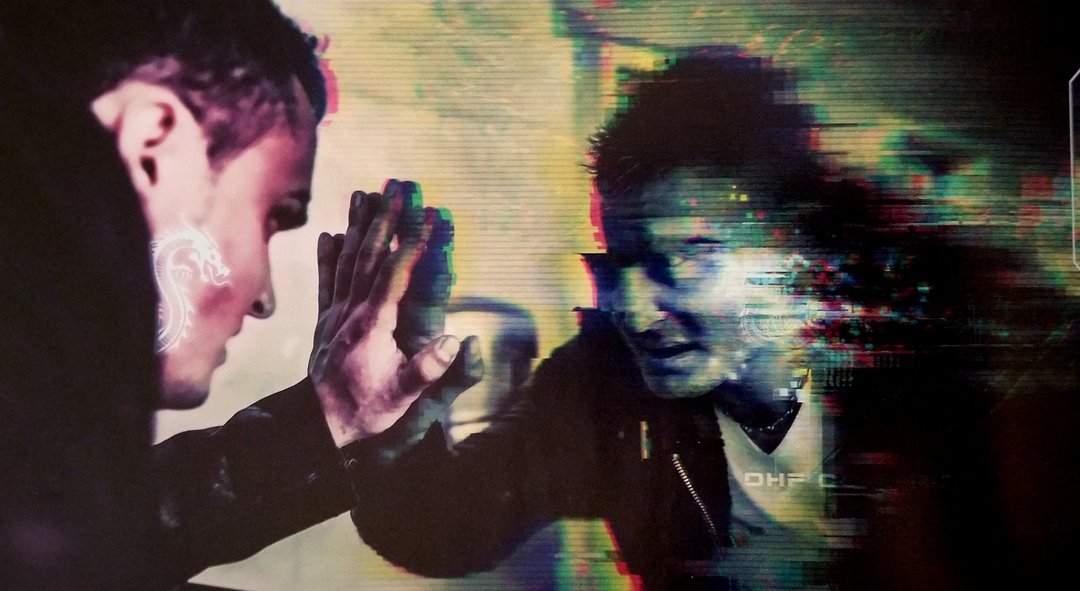
Damage to your Ego score, not your sleeve, is the real killer in this setting. It can be healed, and leaving it for too long could have lasting consequences for your character.
The Backstage, Considerations For GMs
Altered Carbon, as both a setting and a system, is definitely a brilliant piece of work. It won’t be leaving my RPG shelf anytime in the foreseeable future. However, in every review written I always try to be conscious of who a game is for, and I try to offer criticism as a means of helping you decide if a game is a good fit for you and your group. As we get into how this game is to learn for GMs, we’ll be getting into my main criticisms of this system.
There’s no easy way to put this, but while the Altered Carbon system runs incredibly smoothly for players, behind the GM screen is a bit of a different story, at least at first. If I had to sum up my criticism of the core book in a single word, it would be this: inconsistent. As one example, the core book often uses symbols in place of words for things (such as depletion, a down-facing arrow inside a red box for marking a reduction of ammo in a gun or stock in a store), and it’s often very good at defining them when they first appear. The book uses a new symbol for the first time on page 90, a symbol you’ll learn later means “speed dice,” those things that are used for combat actions and initiative that we just talked about. You don’t learn the definition of this particular symbol, however, until page 123 when you finally encounter the speed dice section, despite it being used again and again throughout that span of pages!
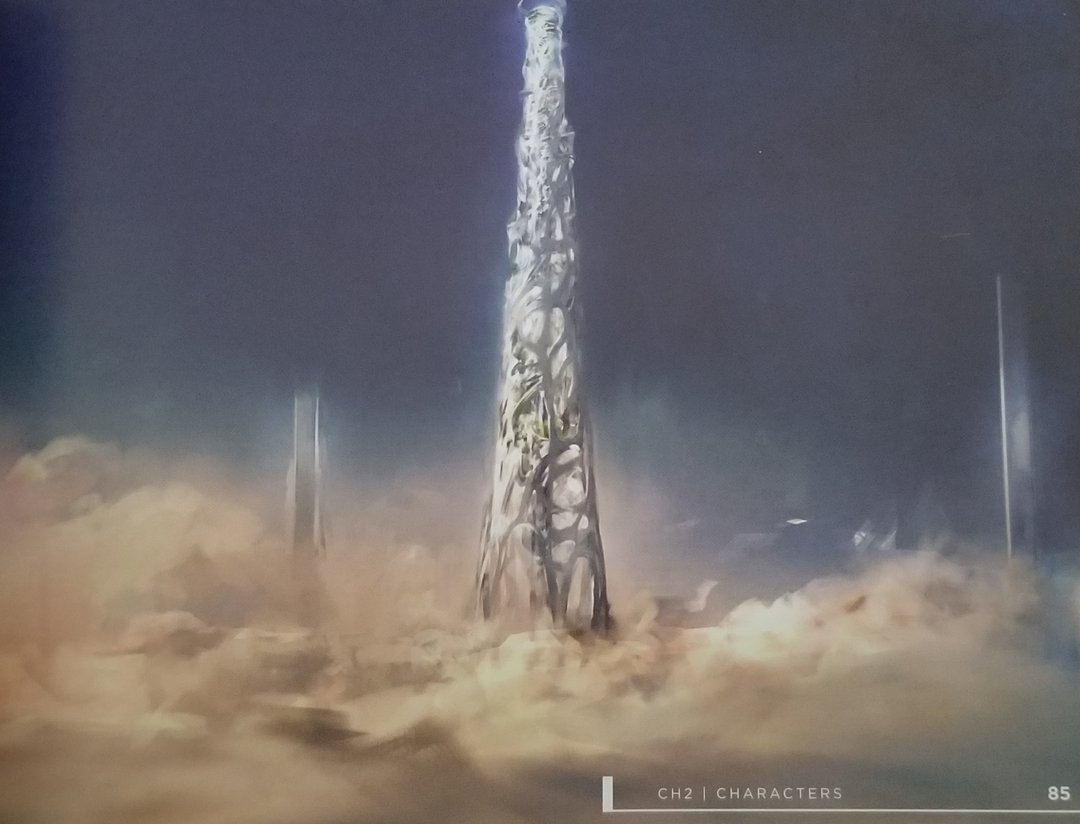
A rendering of The Aerium, the sky-high cloud spires on Earth that Meths call home.
For seemingly no good reason, the book keeps you guessing on what this particular, circular symbol means for a little over 30 pages of rules (roughly a tenth of the book’s overall length). An extra sentence of description when it first appears is all that’s needed, but instead you are made to wait; context helps, but the lack of confirmation is a frustrating one. Another inconsistency is the use of “round” and “turn” which are found backwards in Altered Carbon from nearly every other TTRPG and board game they are used in. Most folks agree that turn is a single player’s action (e.g. “hurry up and take your turn”), while round typically refers to a complete revolution around all players; in Altered Carbon they are used in reverse, and this I’m sure will irk many people who are used to seeing them used relatively standardly the other way around.
The book is full of these inconsistencies. None of them is game breaking, and after you’ve slogged through the entirety of the rules, you’ll see how all the pieces fit together. But getting there is a bit of a trudge indeed. As another example, just check out this wording found on page 132 regarding armor and cover (my own underline provided for emphasis): “Cover can also provide a multitude of defenses, much like Apparel (See pg. 234), in the form of providing an Armor entry. This bonus can stack with armor provided by a character’s gear depending on the material, but regardless the better of the two will always be used, even if Stacking is not possible.” Are you confused? For what seems like it should be a relatively simple statement about the priority of armor and cover, whether they stack or whether they don’t, I had to reread it about ten times to get what I think it was hinting towards. It sometimes seems as if sections of this book are written by drastically different writers, ununified by an editorial standard, with some sections being crystal clear on the first read and others being needlessly wordy or obtuse.
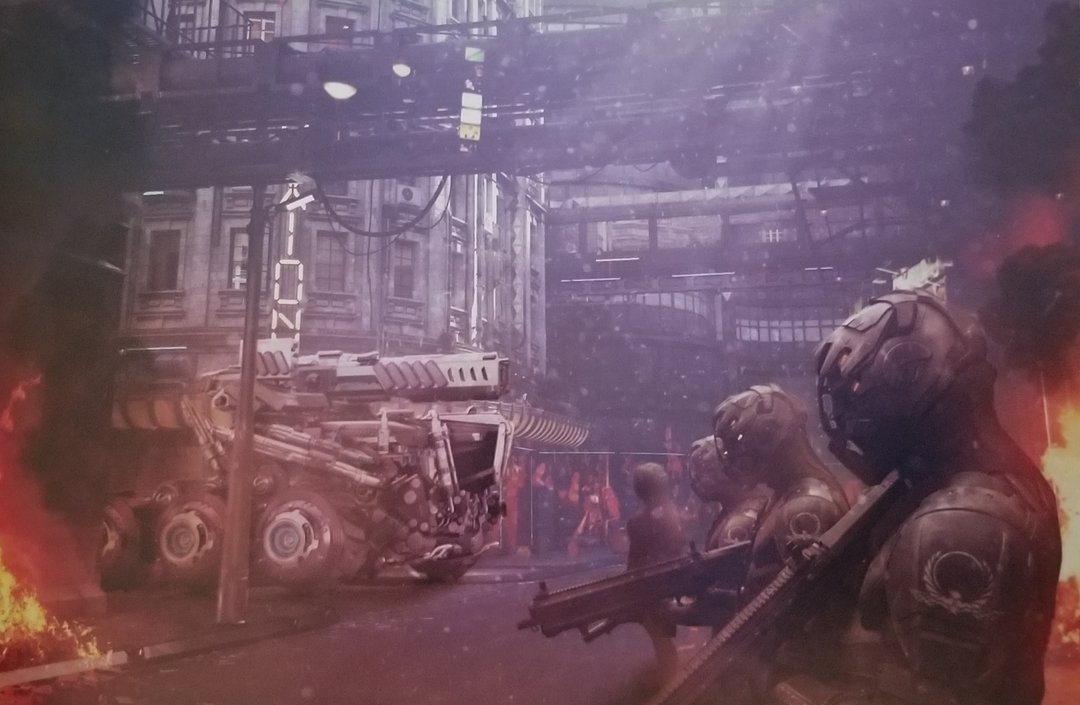
Always gotta be extra careful when the men and women of CTAC show up!
As a GM who is new to Altered Carbon, your first read through the core book is likely to be a rough one. There will be multiple instances of unclear wording and symbols or concepts you’re left wondering about. Once you’re through the book, and you begin using it as a reference, you’ll begin more quickly flipping back through various sections. You’ll add your own tabs to the pages and link up rules with their charts. You’ll keep favorite sections for quick reference handy, and at that point, the book starts coming together. That first pass, though, can be discouraging for a GM who’s expected to learn, teach, and run the system. While the book isn’t terrible for teaching you how to play, it does seem like it can’t make up its mind on how to split its space between teaching and acting as an in-game reference.
And while we’re on the topic of the book as a continuing reference, we need to talk about its formatting. There are a lot of light colors used in the text headers and subheaders, light greys and turquoise mainly, with some occasional red tossed in. The brightest words on the page aren’t always the headers, which plays tricks on how your eyes are lead to various points around a page. Some sections use a nice bright red for their headers, easily recognized and scanned, while others use a grey that’s lighter than the black text of the subsection below it. Inconsistency at work once again. I wish they’d stuck to a more bold, and at least consistent, formatting across the entire book. Again, as with my other criticisms, by the time you’ve read the entire 300+ pages and begun referencing back through the chapters for what you need, you’ll become more practiced at searching for what you need. Getting there without frustration is the challenge at hand.
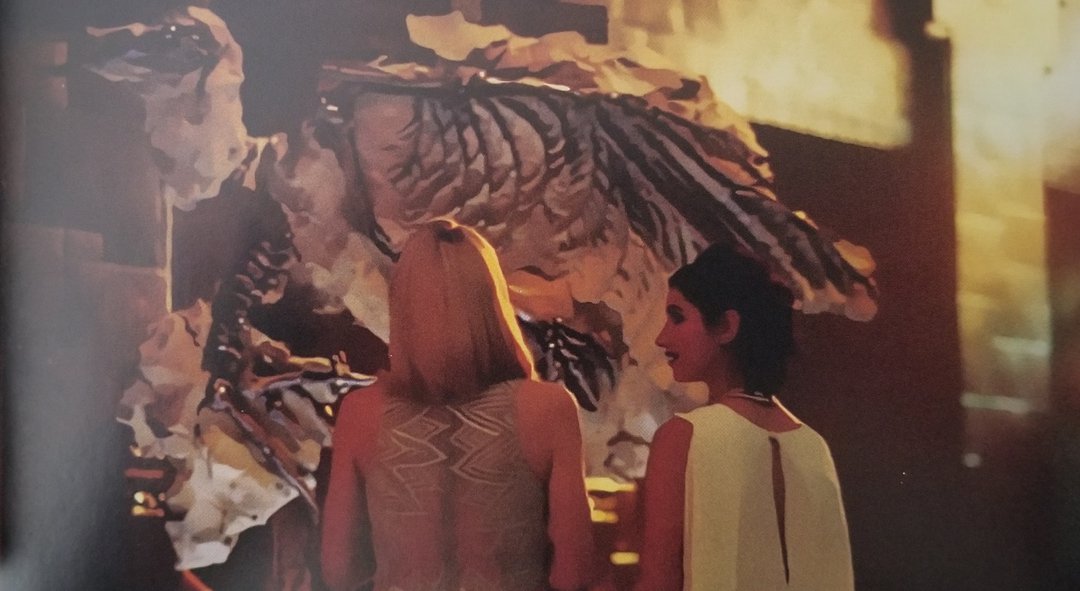
Elders present an interesting bit of lore for GMs to draw on if desired. Did you know their fossilized remains make the alloy that DHF stacks are built from? Harlan's World is full of it.
All of this isn’t to say that the Altered Carbon core book gives nothing to new GMs. There are plenty of suggestions in the back of the book for how to frame a campaign, both as an action packed thriller or as an atmospheric noir mystery, though unlike some other core books this one doesn’t come with a pregenerated adventure printed in the book; to get that you’ll have to go online to Hunters Entertainment’s resource page. You’ll also be able to find lots of other goodies not printed in the book such as character sheets and reference materials. The book itself gives GMs some common foes for quick reference, though you should be prepared to flesh out more using the existing ones as a guide. And thankfully much of the player-facing stuff like character creation is streamlined to get players ready to play with as much or as little GM help as they’d like. That part of the game will be smooth and easy to present to your friends.
Fortunately for folks who were champing at the bit at the start of this review, now possibly cooled by the criticisms, there’s one saving grace that will likely carry you through the rough read your first time through this book. It’s the same draw that probably has a group of your future players eager to get on character generation already too. It’s the setting! Let’s face it, the worlds of Altered Carbon are rich and detailed. Both my friends who had seen the show as well as those who had not but simply loved cyberpunk were thrilled to play around in it. And as far as sci-fi goes, the concept of the DHF lends itself to all kinds of plot twists and metahuman exploration you’re not going to get anywhere else. The setting presented in this book is incredibly strong, so if you can make it through that first read you’ll be rewarded tenfold.

If you can stick out the book's rough points, you'll soon be soaring like...well, like an aircar!
The Wrapup, A Fantastic Final Verdict
So let’s recap. We’ve got a strong setting and lore. Builds are in-depth and satisfying, taking either as long or as little tinkering time as players please. Dice are snappy in rolling and never bog down the narrative or the action. And everything comes together in a smooth blend of story and systems. While the book itself can be a bit rough around the edges for GMs new to its contents, owing to no small degree of inconsistency, that in itself isn’t a disqualifier against all the wonderful things you get between the hardcovered pages.
My recommendation goes like this: if you honestly don’t mind bookmarking pages or taking notes for cross referencing while you learn the game system, buy Altered Carbon. If you want, in my opinion, the current best game system on the TTRPG market that can satisfy both the crunchy crowd as well as dice-light narrative lovers, buy Altered Carbon. If your group loves either the show, the books, or are just cyberpunk lovers, buy Altered Carbon. If you want to experience something truly different in the sci-fi realm, tech that lets characters free their minds from the confines of single bodies, along with all the implications that come with it, don’t hold off! Buying this game is a solid addition to any TTRPG lover’s shelf. Hunters Entertainment and Renegade Games have made something truly wonderful in transforming this world into an RPG, and Renegade Games as a publisher continues its trend of putting high quality, novel, and innovative games on the market. I hope that, if this at all seems like your kind of game, you support these awesome folks and give it a try. I for one look forward to seeing how this game is supported for years to come!